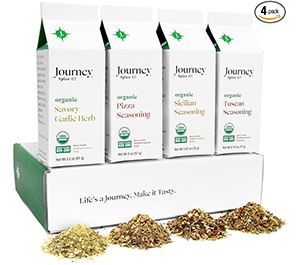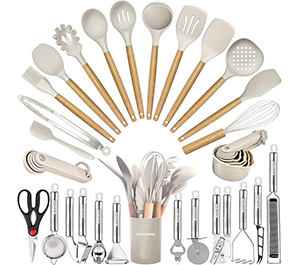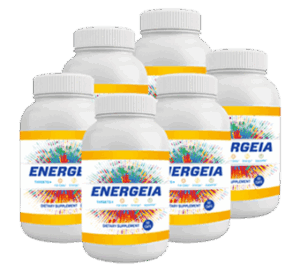The Mediterranean diet is renowned throughout the world for its health and ease, as well as being an extremely tasty diet. This diet is based on the traditional eating habits of countries bordering the Mediterranean Sea and is focused on fresh, whole foods that nurture the body. Below are 10 core foods that form the base for this diet, their health benefits, and how to incorporate them into daily meals.
1. Extra virgin olive oil: The Mediterranean elixir
- Why it’s essential: Rich in monounsaturated fats and antioxidants, olive oil is a cornerstone of the Mediterranean diet, known for its anti-inflammatory and heart-protective properties.
- Nutritional highlights: High in vitamin E, polyphenols, and oleic acid.
- How to use:
- Drizzle over salads and roasted vegetables.
- Use as a base for marinades, sauces, and dressings.
- Substitute for butter in sautéing or baking.
- Tip: Choose cold-pressed, extra virgin olive oil for maximum benefits.
2. Whole grains: A nutrient-packed foundation
- Examples: Quinoa, farro, barley, bulgur, and whole-grain bread.
- Why they’re essential: Whole grains are rich in fiber, vitamins, and minerals, promoting digestive health and steady energy levels.
- How to use:
- Create grain salads with veggies, herbs, and a light dressing.
- Add cooked grains to soups and stews for texture and nutrition.
- Use whole-grain pita for wraps or snacks.
- Key fact: Whole grains reduce the risk of heart disease and diabetes.
3. Fresh vegetables: The star of the plate
- Examples: Tomatoes, zucchini, spinach, bell peppers, and eggplant.
- Why they’re essential: Vegetables are packed with antioxidants, fiber, and phytonutrients that support overall health and reduce chronic disease risks.
- How to use:
- Grill or roast veggies with olive oil and Mediterranean herbs.
- Prepare vegetable soups like gazpacho or minestrone.
- Toss fresh greens into wraps, sandwiches, or pasta dishes.
- Pro tip: Aim for a colorful variety to maximize nutrient intake.
4. Fresh fruits: Nature’s sweet treat
- Examples: Oranges, figs, grapes, pomegranates, and berries.
- Why they’re essential: Fruits provide natural sweetness and are rich in vitamins, minerals, and antioxidants.
- How to use:
- Snack on fresh fruit throughout the day.
- Add sliced fruit to yogurt or oatmeal for a refreshing breakfast.
- Incorporate citrus juice into dressings and marinades.
- Interesting fact: Pomegranates and berries have anti-inflammatory properties.
5. Legumes: Plant-based Protein Powerhouses
- Examples: Chickpeas, lentils, black beans, and fava beans.
- Why they’re essential: Legumes are nutrient-dense, offering protein, fiber, and essential minerals like iron and potassium.
- How to use:
- Blend chickpeas into creamy hummus or spreads.
- Cook hearty stews with lentils and seasonal vegetables.
- Add beans to salads or as a side dish.
- Key insight: Legumes are affordable, versatile, and sustainable.
6. Seafood: Omega-3 rich protein
- Examples: Salmon, sardines, mackerel, and shrimp.
- Why they’re essential: High in omega-3 fatty acids, seafood supports heart and brain health while reducing inflammation.
- How to use:
- Grill fish with lemon and fresh herbs for a simple dinner.
- Prepare Mediterranean seafood stews with tomatoes, garlic, and spices.
- Add canned tuna or sardines to salads for a quick lunch.
- Pro tip: Aim for two servings of fatty fish per week.
7. Nuts and seeds: Nutrient-dense snacks
- Examples: Almonds, walnuts, pistachios, sesame seeds, and sunflower seeds.
- Why they’re essential: Nuts and seeds are packed with healthy fats, protein, and antioxidants.
- How to use:
- Sprinkle nuts on salads or yogurt for added crunch.
- Incorporate seeds into bread, granola, or smoothies.
- Enjoy a handful of nuts as a midday snack.
- Fact: Walnuts are particularly beneficial for brain health.
8. Dairy: rich yet balanced
- Examples: Greek yogurt, feta cheese, and kefir.
- Why they’re essential: Dairy provides calcium, probiotics, and protein for bone and gut health.
- How to use:
- Top salads or roasted vegetables with crumbled feta.
- Enjoy Greek yogurt with honey and nuts for a classic Mediterranean dessert.
- Use kefir in smoothies or as a refreshing drink.
- Tip: Opt for fermented dairy products for added probiotics.
9. Herbs and spices: Flavor enhancers
- Examples: Oregano, basil, thyme, rosemary, and mint.
- Why they’re essential: Herbs and spices elevate dishes with vibrant flavors while offering health benefits like improved digestion and reduced inflammation.
- How to use:
- Season meats and vegetables with fresh or dried herbs.
- Add mint to beverages or desserts for a refreshing twist.
- Use rosemary and thyme in soups or stews.
- Key insight: Herbs allow you to cut back on salt without sacrificing taste.
10. Red wine: Enjoy in moderation
- Why it’s essential: Red wine contains antioxidants like resveratrol, which may support heart health when consumed in moderation.
- How to use:
- Pair a small glass with dinner to enhance flavors.
- Use wine in cooking to deglaze pans or flavor sauces.
- Note: Stick to recommended guidelines 1 glass per day for women, 2 for men.
Building a Mediterranean pantry
To fully embrace the Mediterranean diet, stock up on these essentials:
- Pantry staples: Olive oil, canned legumes, whole grains, nuts, and dried herbs.
- Fridge basics: Fresh produce, seafood, yogurt, and cheese.
- Extras: Quality red wine and dark chocolate for indulgent treats.
Conclusion
More than a diet, the Mediterranean is an embracing of lifestyle where fresh, wholesome ingredients are at the heart of every recipe. Using the following 10 staple foods will assure a healthy but mouth-watering diet.















